May 8, 2024 | Dogs, General
The Beauceron is a very original, powerful, robust and muscular dog, but without any sluggishness. It impresses with its stamina and incorruptibility. His nature is never angry, fearful or even shy. It is described in specialist literature as an excellent family dog. He prefers to be in the middle of the family or his pack and accompanies you wherever you go. Despite its size, the Beauceron is a sensitive and delicate dog. It is cautious and reserved with small children, older or anxious people. As a rule, people unknown to him are not harassed or even greeted stormily. However, if friendly contact is sought and he has met someone, he will greet them warmly. Kennels are absolutely unsuitable for the Beauceron breed.
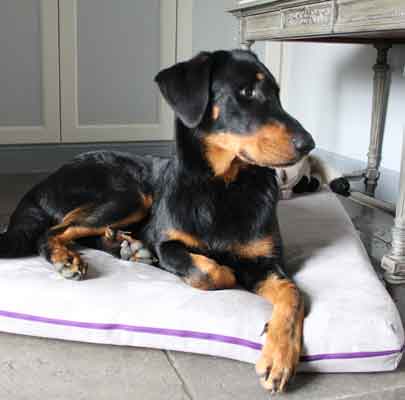
The Beauceron is still a healthy, extremely robust breed with an average life expectancy of around 12 years.
Color strokes:
bicolored black-red – Bas rouge
tricolor black-red-grey – Harleqiun
Height
male: 65-70 cm
female: 61-68 cm
Feb 23, 2024 | Dogs, General
Temperatures that are comfortable for us can, under certain circumstances, lead to heat stroke for the dog.
Heat stroke in dogs
If temperatures rise to over 25°C in summer, dogs are more likely to suffer from heatstroke. Since there are no sweat glands on large parts of the skin in dogs and cats, the animals are very sensitive to heat. Sweat glands are only located on the nose and the ball of the nose. This is too small a surface area to regulate body temperature sufficiently. And unlike humans, the warm fur can be exchanged for an airy summer dress.
How does heatstroke occur in dogs?
If the dog is exposed to heat for a long time and has no opportunity to retreat to a cool place, the dog can very quickly develop heat stroke. If you park your car in the sun at a pleasant 24°C, it can become a fatal trap for your dog inside within an hour. Never leave your dog alone in the car, even if it is in the shade. The sun moves and the car turns into an oven within a very short time.
In warm weather, high humidity, and strenuous physical activity, well-trained dogs can suffer heat stroke. Rescue dogs may only be used for 15 minutes at temperatures above 30°C. Then a sufficiently long break must be taken and the animal must have unrestricted access to water. To ensure that the rescue dog is adequately protected, the body temperature is checked regularly.
If your dog is a flat-nosed dog (e.g. French Bulldog, Pug, Boxer, Cavalier King Charles Spaniel, Pekingese…) you should be particularly careful. Even a quiet walk in the midday heat can cause heat stroke in a dog with restricted breathing.
What happens when you have heat stroke?
Dogs dissipate heat by panting. Due to the resulting loss of fluid, the animals become dehydrated and their body temperature continues to rise. From a body temperature of 40°C, the organs are no longer adequately supplied with blood, significant circulatory problems occur and shock can occur. If the body temperature continues to rise, the body’s own protein clots, the animal collapses and, after a painful struggle, dies of heart failure.
These are the signs of heat stroke:
- heavy panting and shallow breathing
- great restlessness, the dog is looking for a place in the shade
- rapid pulse and heart palpitations
- Body temperature over 40°C
- deep red tongue and glassy gaze
- Inside of ears are hot and red
- the animal is exhausted, restless and convulsing
- Vomiting and diarrhea
- Balance disorders and staggering
- Apathy and, in the worst case, unconsciousness
First aid measures for heat stroke:
- move the animal to a cool, well-ventilated place
- offer the animal measured water (never force it)
- place the dog on a damp towel and cool his head and neck
- slowly moisten the legs
- shower the animal slowly and carefully, starting with the legs
- Do not under any circumstances pour water on the animal, risk of shock!
- under no circumstances use ice-cold water, danger to life!
- If the dog is unconscious, place him on his right side, stretching his head and neck to prevent suffocation
take the animal to the vet immediately
If you have a heat-damaged dog, you should always and under all circumstances consult a veterinarian! Only a veterinarian has the chance to prevent irreparable damage and initiate emergency measures.
Here are some useful tips on how to get your dog through the summer heat!
Feb 23, 2024 | Dogs, General
Why a quiet, restful sleep is so important for dogs.
For most dogs, the daily routine is similar. After the last round of walks, the dog and his owner go to bed. Peace returns, the dog can switch off and get a restful sleep. With a bit of luck next to your master and mistress in the bedroom. These sleeping sounds calm the pack animal dog the most.
It starts with the first alarm ringing. People become active and from this point on, the four-legged friend can no longer properly assess everyday life. He finds it difficult to switch off and usually just dozes in our presence.
If the dog sleeps deeply and soundly, the dog usually lies stretched out for a long time and there is hardly any body tension. If the four-legged friend is just resting, his eyes are closed, but he is always ready to react immediately to any deviations.
Healthy, sufficient and restful sleep is essential for dogs.
Rest periods throughout the day are extremely important to gather strength and process experiences. In addition, the immune system is strengthened and our four-legged friend is less susceptible to illness. Dogs get restful sleep, are much more relaxed in their behavior, more receptive, learn faster and have better motor skills.
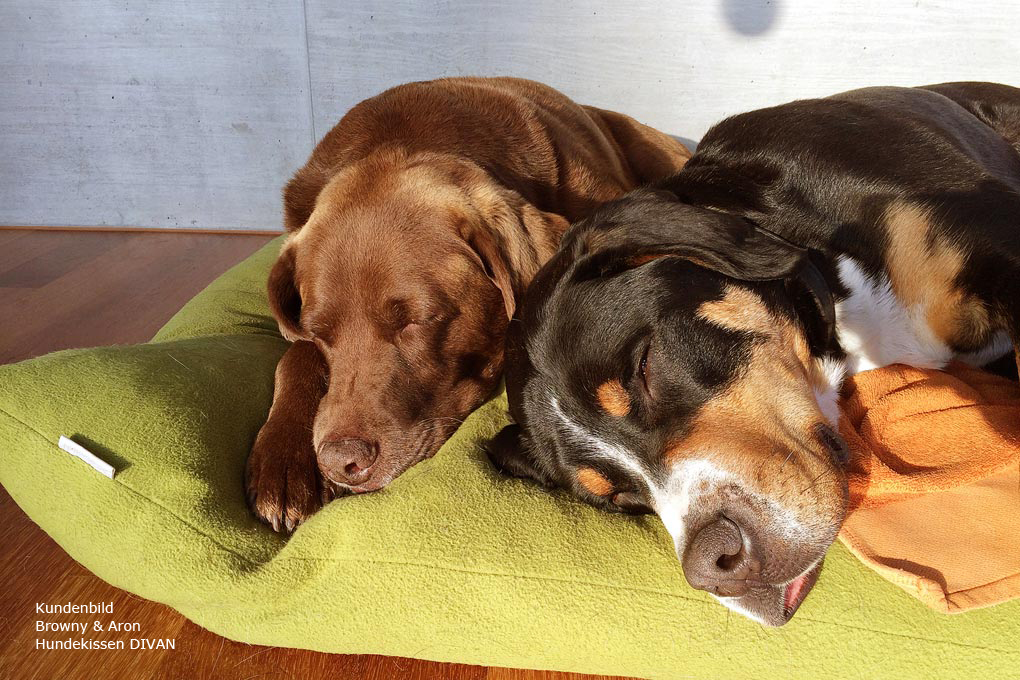
Dogs need a restful sleep.
How do I recognise if my dog is sleeping deeply?
If the dog is just resting, he has his eyes open and is looking around. He lies quietly in his place in the dog bed and doesn’t let himself be disturbed immediately.
When the dog is dozing, its nose and ears scan the surroundings. He has his eyes closed, is breathing normally and is not dreaming.
Dogs’ deep sleep phases are quite similar to those of humans. When you fall asleep, your heart rate and breathing slow down and your blood pressure drops. The REM phase comes in which the dogs process their experiences of the day. If the four-legged friend twitches and whines with his eyes closed, he is dreaming and is in the deep sleep phase. In contrast to humans, who dream for about a quarter of the deep sleep phase, the REM phase in adult dogs only lasts about 10% of their sleeping time, although young dogs need a little more.
Scientists have found that humans and dogs show identical patterns of sleep deprivation. They are initially more overexcited, then unfocused and have poor motor skills. Then comes the phase in which they are very irritable. The first symptoms of illness then appear, which can become chronic.
That’s why you should provide your dog with a place to sleep that offers maximum regeneration, because restful sleep is so important.
Restful sleep can be learned again.
Our dogs are no longer used to natural periods of rest. They are just as active as their master. Many dog owners also think they have to keep the dog busy. But the animal actually has to learn again to fall into a deep sleep during the day. In order for the dog to fall into a deep sleep during the day, a few things must be considered.
The perfect sleeping place is the be-all and end-all for the optimal regeneration of your four-legged friend.
Nature has shaped dogs’ natural sleep experience. In order to have a feeling of security and protection, wolves dig a hole for themselves. Dogs get this security when their backs are protected, for example with our BOOX, CUBE, BLOOM dog bed or our ARENA dog basket.
Do not place the dog basket in the middle of the room. It is better to place it on a quiet side or corner of the room, without direct sunlight and free from drafts. Also not directly in front of the heater, as the dog can quickly become too warm. Please do not place the sleeping area in a passage or hallway. There is too much “traffic” and unrest at this point. So that your furry friend can switch off and find peace, a somewhat hidden, protected place is the right place for the dog bed.
To prevent joint problems, please do not let your dog sleep directly on the cold, hard floor. Provide him with a place to sleep that is well insulated from cold and heat (underfloor heating). Our dog cushions are thick enough to meet these requirements. The orthopedic latex filling also ensures a healthy, deep sleep. It supports the dog’s body with its excellent point elasticity and optimally reflects the body shape so that there is no pressure on the intervertebral discs and spine. This ensures optimal muscle relaxation.
If the dog already has problems with its joints, we recommend a viscoelastic (memory foam) dog mat like our PAUL or MARY.
Make sure the dog bed is the right size. The dog should also be able to stretch out properly.
Which also ensures a good night’s sleep.
Exercise and exposure to fresh air are essential for a good night’s sleep. Mental demands such as nose work and tracking require not only the muscles but also the head. A restful sleep also depends on a good sleeping environment, but we have already discussed that. At night it is also important that the room is dark. The animal should also not be disturbed by loud ambient noises. To ensure that the bladder doesn’t strain during the night and prevent the dog from sleeping through the night, a final walk should take place before going to bed. Feed him early in the evening so that he has enough time to digest his evening meal.
Serious causes of too much sleep.
There is a big difference between sleeping and lying lethargic. Watch your dog closely. If he seems rather sluggish and lethargic, you should first check his feeding habits. Is it possible that your four-legged friend is not drinking enough or does he hardly have an appetite? This can be a serious red flag. When we humans have the flu, we don’t want to get out of bed and suffer from loss of appetite and lack of motivation. Watch your dog closely and see if he might
– receives too little employment and is under-challenged
– suffers from an underactive thyroid
– Is diabetic
– suffers from depression
– was infected with Lyme disease from a tick bite
Basically: 16 to 20 hours of sleep is normal for dogs and usually not a cause for concern. However, if your animal’s behavior suddenly changes, he is much less active, lies lethargic in his bed, or his drinking habits or eating behavior change, you should always consult a veterinarian.


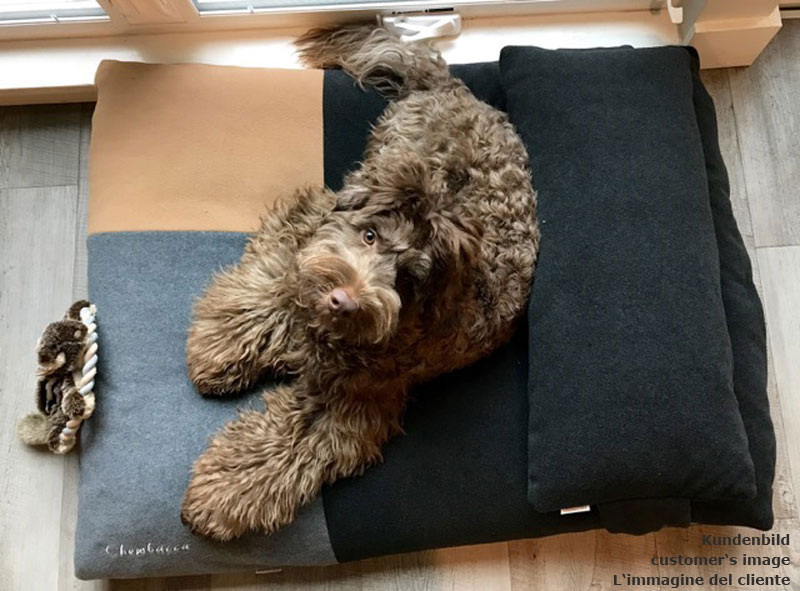




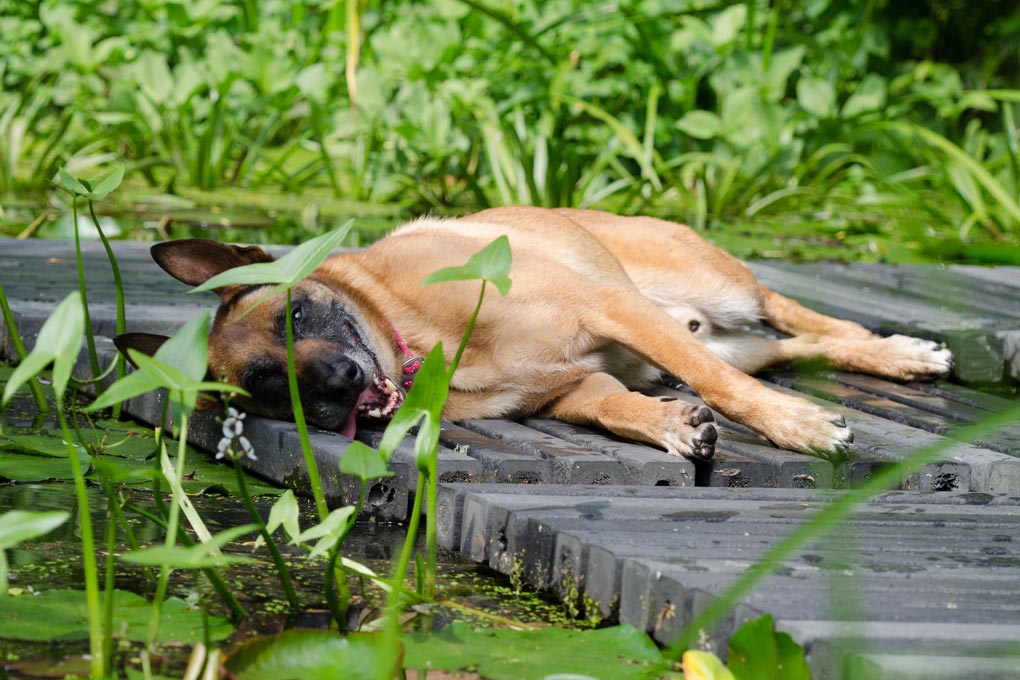
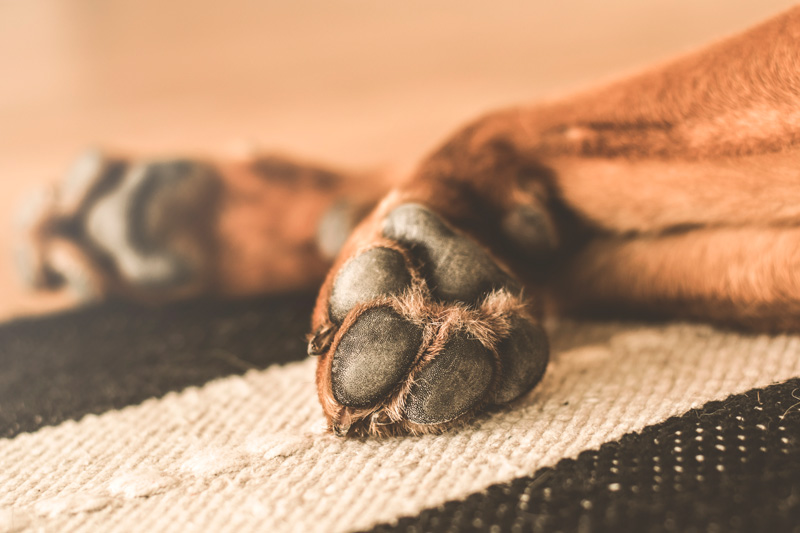
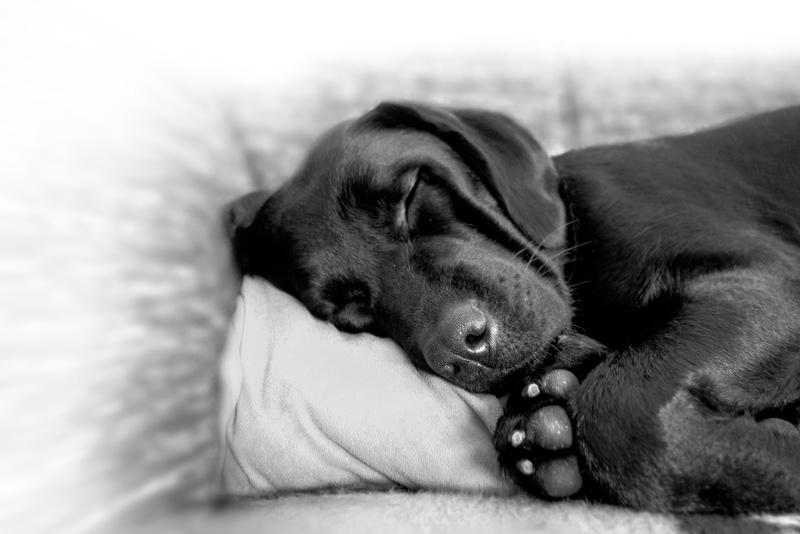
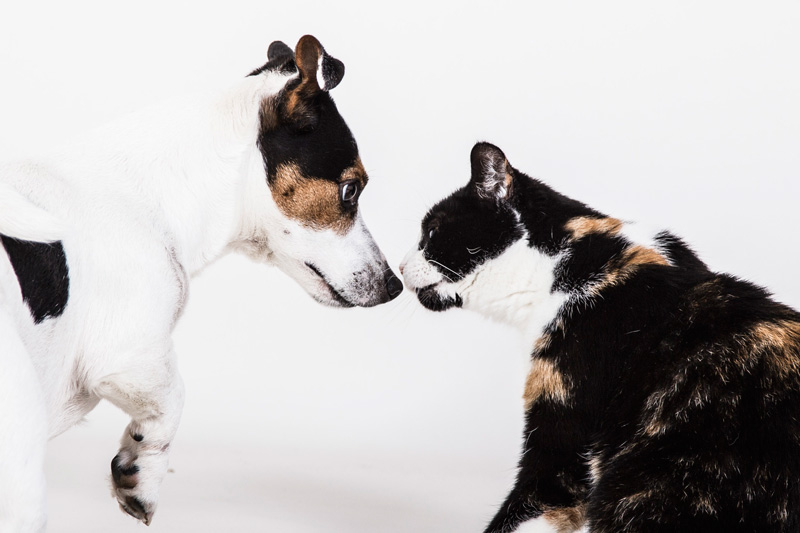
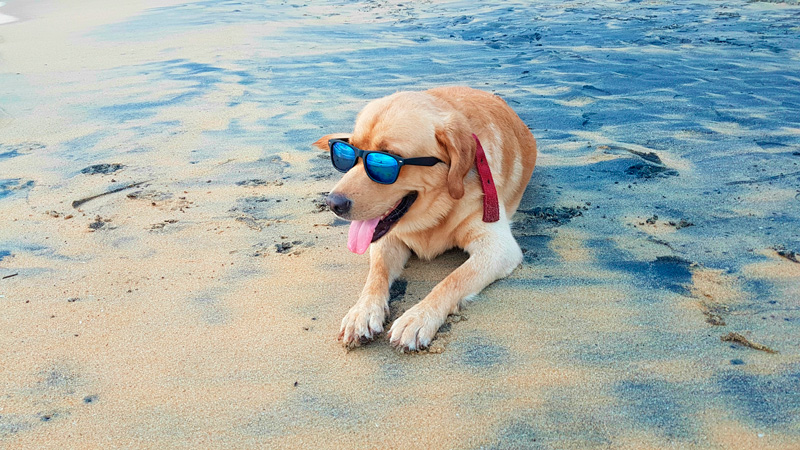

Recent Comments